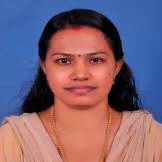
Sreejini K S
Work place: Department of Computer Science and Engineering, NIT Calicut, Kerala, India
E-mail: sreejini.k.s@gmail.com
Website:
Research Interests: Engineering, Computational Engineering, Computational Science and Engineering
Biography
Sreejini K. S. completed her degree of Master of Technology in Computer Science and engineering in the year 2012 from National Institute of Technology, Calicut, Kerala, India. Currently she is a research scholar undergoing Ph.D degree programme on fundus image analysis at the same Institute. She has a few research publications.
Author Articles
A Review of Computer Aided Detection of Anatomical Structures and Lesions of DR from Color Retina Images
DOI: https://doi.org/10.5815/ijigsp.2015.11.08, Pub. Date: 8 Oct. 2015
Ophthalmology is the study of structures, functions, treatment and disorders of eye. Computer aided analysis of retina images is still an open research area. Numerous efforts have been made to automate the analysis of retina images. This paper presents a review of various existing research in detection of anatomical structures in retina and lesions for the diagnosis of diabetic retinopathy (DR). The research in detection of anatomical structures is further divided into subcategories, namely, vessel segmentation and vessel centerline extraction, optic disc segmentation and localization, and fovea/ macula detection and extraction. Various research works in each of the categories are reviewed highlighting the techniques employed and comparing the performance figures obtained. The issues/ lacuna of various approaches are brought out. The following major observations are made: Most of the vessel detection algorithms fail to extract small thin vessels having low contrast. It is difficult to detect vessels at regions where close vessels are merged, at regions of missing of small vessels, at optic disc regions, and at regions of pathology. Machine learning based approaches for blood vessel tracing requires long processing time. It is difficult to detect optic disc radius or boundary with simple blood vessel tracing. Automatic detection of fovea and macular region extraction becomes complicated due to non-uniform illuminations while imaging and diseases of the eyes. Techniques requiring prior knowledge leads to complexity. Most lesion detection algorithms underperform due to wide variations in the color of fundus images arising out of variations in the degree of pigmentation and presence of choroid.
[...] Read more.Other Articles
Subscribe to receive issue release notifications and newsletters from MECS Press journals